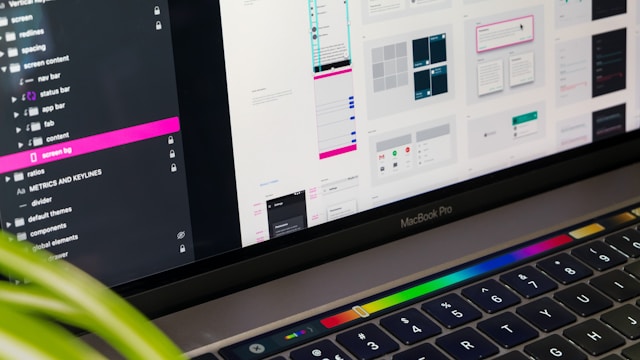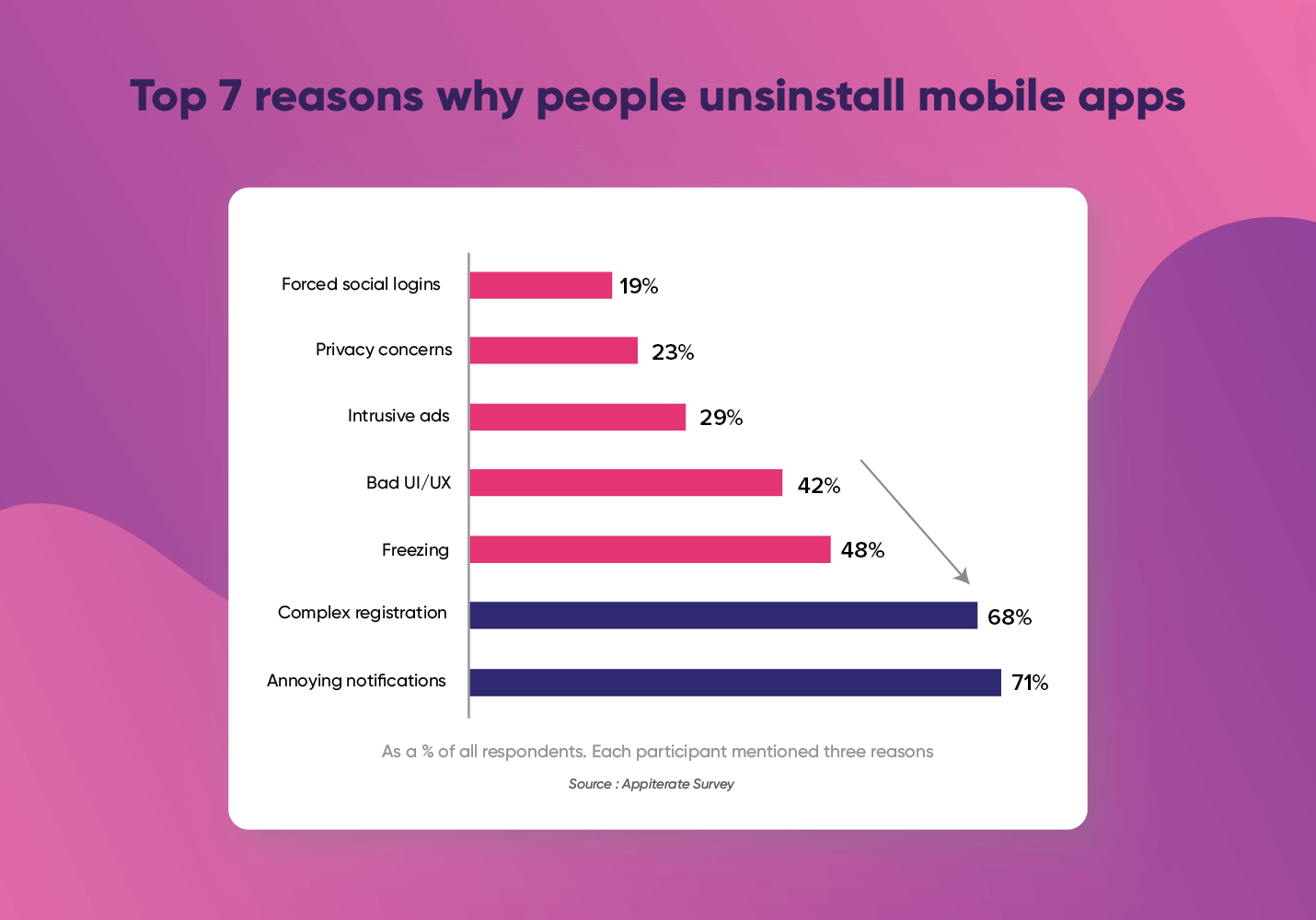As someone who helps recruit graphic designers, I’ve seen countless portfolios. A graphic design portfolio is more than a collection of work. It’s your visual resume, your creative fingerprint, and a powerful way to attract potential clients.
It’s often the first impression you make. A strong portfolio can open doors to exciting opportunities. It’s your most valuable asset, showcasing not just your work but your design approach, critical thinking skills, and problem-solving skills.
In this article, we’ll explore tips, examples, and strategies to showcase your work effectively. If you’re looking to create a UX design portfolio, read more about our top graphic design portfolio examples below.
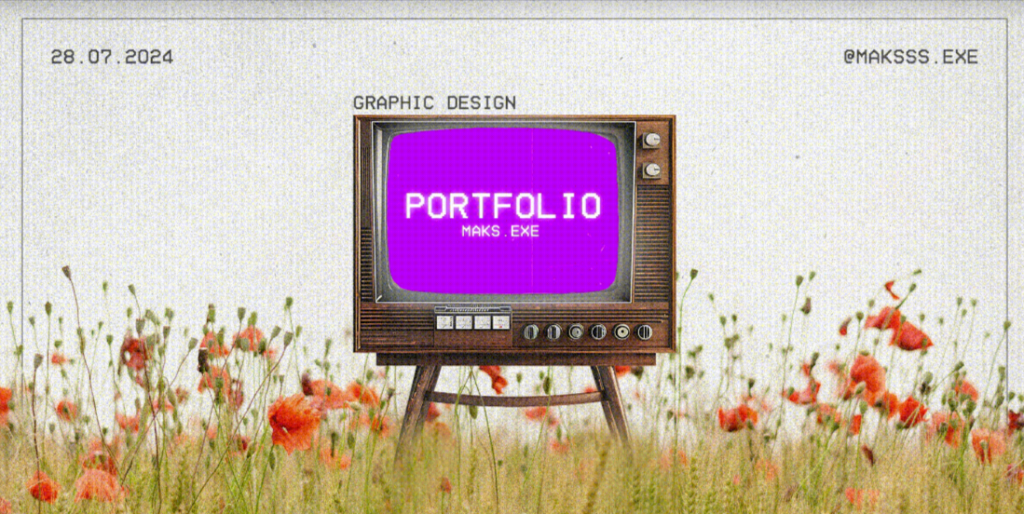
Why Your Graphic Design Portfolio Matters
Your graphic design portfolio is more than just a collection of pretty pictures; it’s a strategic tool that can significantly impact your career trajectory. In a competitive industry where talent is abundant, your portfolio is what sets you apart. It’s your chance to show not just what you’ve done but what you’re capable of doing.
Technical Skills, Creativity, and Versatility
A well-crafted portfolio demonstrates your technical skills, creativity, and versatility. It shows potential clients or employers that you can adapt to different styles, industries, and project requirements. Moreover, it’s a reflection of your personal brand. The way you present your work, the projects you choose to highlight, and the story you tell through your portfolio. These all contribute to how you’re perceived professionally.
Conversation Starter
Your portfolio also serves as a conversation starter. In interviews or client meetings, it provides concrete examples to discuss your approach, thought process, and the value you bring to projects. It can showcase your ability to solve complex design problems, your understanding of user experience principles, and your proficiency with various design tools and technologies.
Remember, your portfolio is not static. It should evolve with you, reflecting your growth as a designer and adapting to your career goals. Whether you’re a fresh graduate looking for your first job, a freelancer seeking new clients, or an experienced designer aiming for a senior position, your portfolio should be tailored to support your current objectives.
Exploring Graphic Design Portfolio Website Examples
Let’s look at some examples of graphic design portfolios. These examples showcase different styles and approaches.
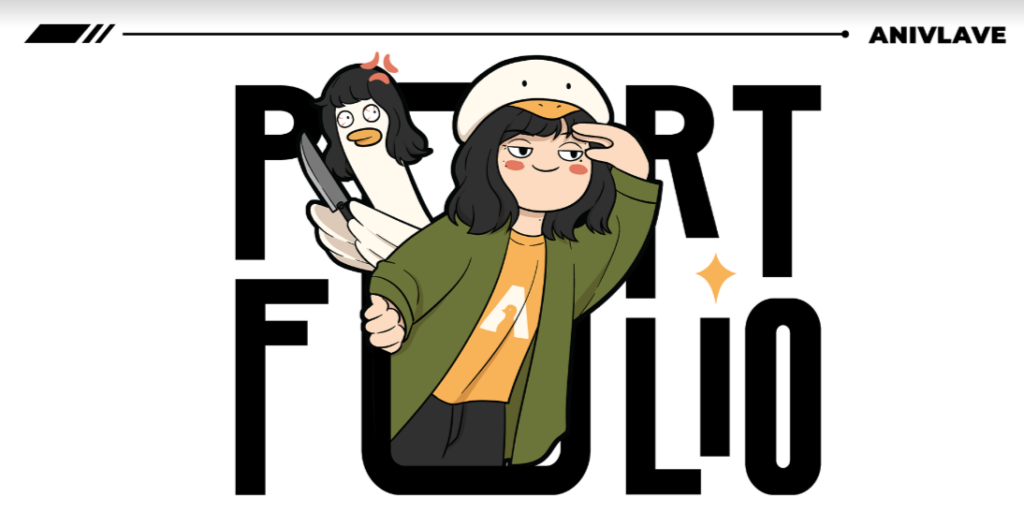
Alvina Dwi’s Portfolio
Alvina clearly demonstrates her design process, allowing users to see how she uses her critical thinking skills to solve problems. She shows different projects such as packaging design and mascot design.
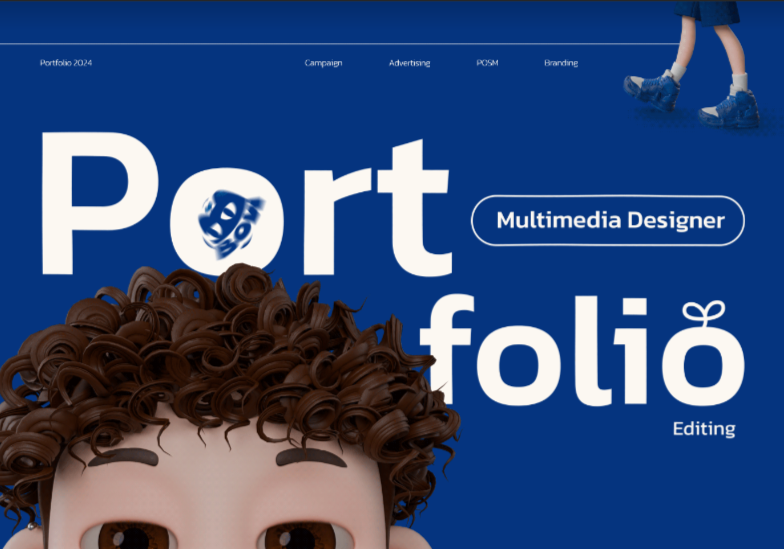
Minh Phuc’s Portfolio
Another great example of a graphic design portfolio is the one above. Minh’s portfolio includes interactive content such as animations, videos, and gifs. These interactions make his portfolio very eye-catching and engaging. His diverse range of content can attract a wide spectrum of digital clients.
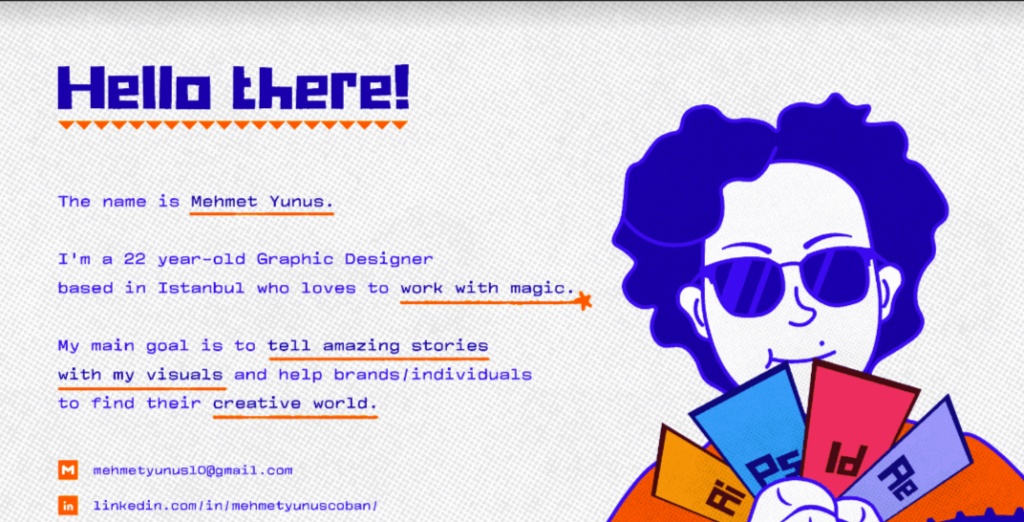
Mehmet Yunu’s Portfolio
What I really like about Mehmet’s portfolio is how he designed his about me page. With minimal animation, he makes the reading experience user-friendly. His design elements are consistent throughout, making it very easy to browse.
Each portfolio tells a unique story. They inspire me to push creative boundaries in my own work. When exploring graphic design digital portfolio examples, pay attention to how designers present their unique styles and strengths. Always think about who will look at your portfolio and why. Make your portfolio fit their needs to get the best results.
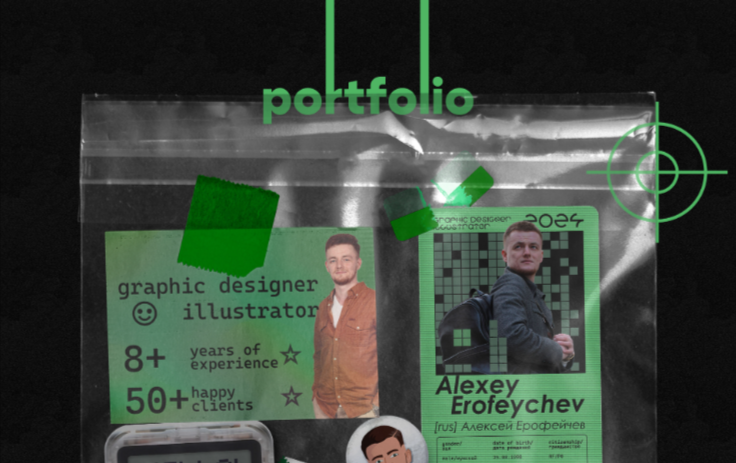
What Makes Good Graphic Design Portfolio Examples?
The best graphic design portfolios are well-organized, visually cohesive, and showcase a thoughtfully curated selection of work that highlights the designer’s versatility and style.
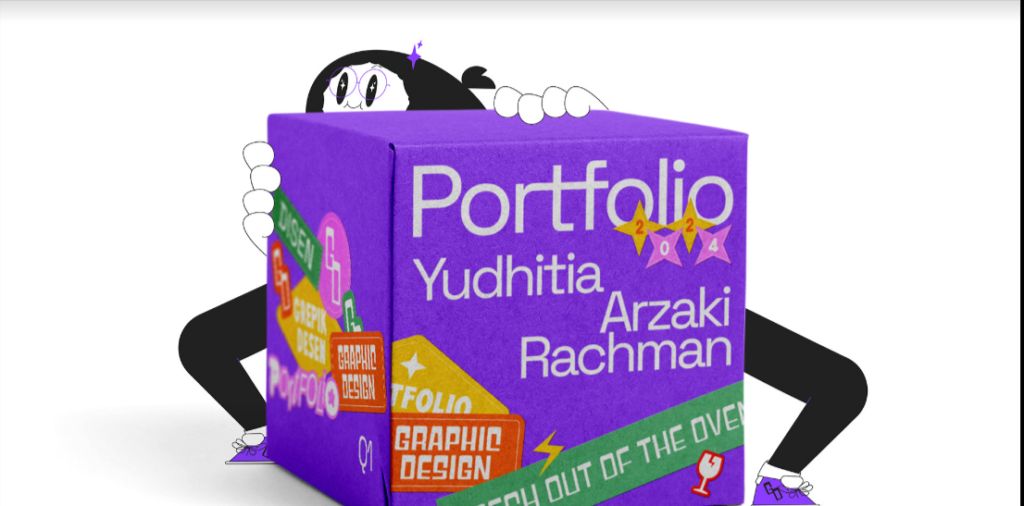
1. Clear Organization
In my experience, a good portfolio should be simple to browse, with a clean layout that’s easy to follow. Clear menus and categories help viewers find what they need quickly, letting your work stand out without distractions.

2. Cohesive Visual Style
I recommend that your portfolio should have a consistent style that shows off your personal brand. Using the same colors, fonts, and design elements across all pages makes it look professional and gives people a sense of your design taste. Learn more about color palettes.

3. Thoughtful Project Selection
When I was focusing on my portfolio, I picked projects that showed off my best skills and a variety of styles. A well-chosen mix of case studies keeps people interested and proves that you’re versatile as a designer, making them want to see more.
The best way to learn is to look at other designers’ portfolios and pretend you’re the hiring manager. Think about which ones appeal to you and why. Looking at your portfolio from the clients’ point of view can help you uncover many impactful strategies that you can implement in your portfolio.
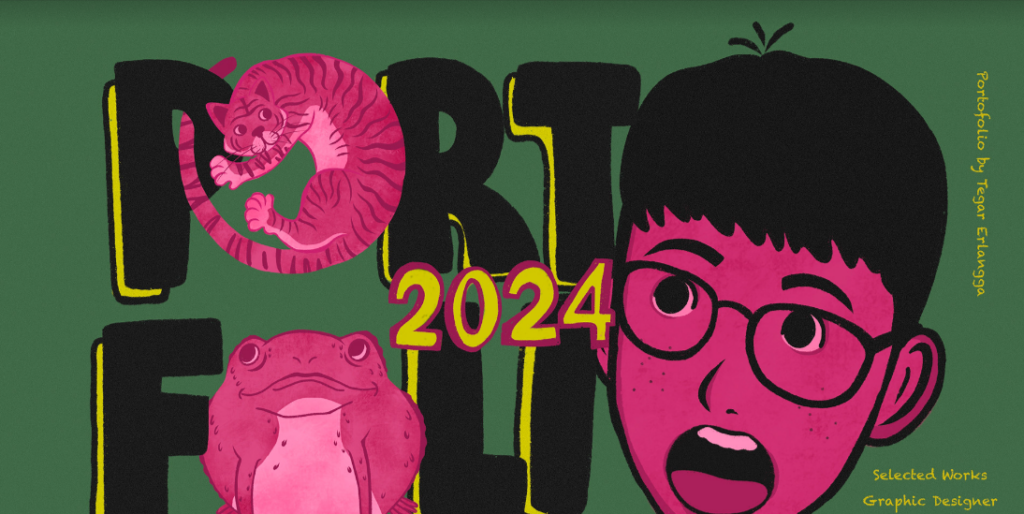
Essential Graphic Design Portfolio Tips
Building a great portfolio takes time and effort. Here are my top tips on what you should include in your portfolio:
1. Curate your best work.
2. Tell the story behind each project to showcase your design process.
3. Update regularly to keep your portfolio fresh and relevant.
4. Include client testimonials.
Remember, quality is more important than quantity. Show only your best work and explain the story behind each project to highlight your design choices. Keep your portfolio updated to show how you’ve grown, and include positive client testimonials to build trust with potential clients.
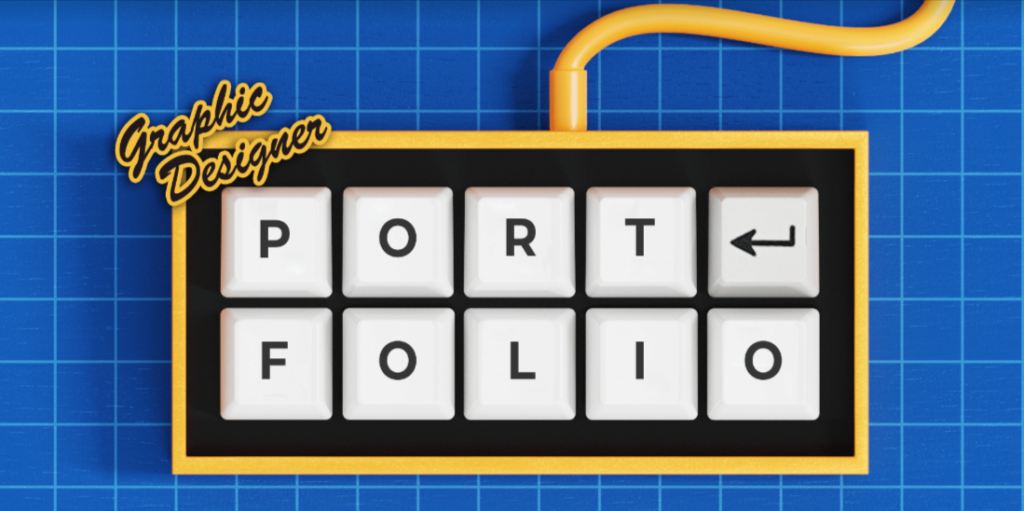
Choosing the Right Graphic Design Portfolio Site
Choose a portfolio site that lets you customize your work, gets you noticed, and connects you with the right people. Here are some of my recommendations of some top sites for your UX design portfolio.
1. UXfolio: Just Enough Customization
UXfolio provides templates while allowing customizations. You can save time by using their templates first and then adjusting them to fit your unique style. This makes UXfolio a great choice for personalizing your portfolio.
2. Behance: Networking and Discoverability
Behance connects you with a huge community of creatives, helping you get your work seen by others. I found that it’s a great place to network, find potential clients, and make your portfolio more discoverable to a wider audience.
3. Dribbble: Ideal for Sharing Work-in-Progress
Dribbble is perfect for sharing snapshots of your work as you go. When I used this site, I could post updates quickly, get feedback, and interact with other designers. This made it ideal for building an audience and staying inspired.
Each platform has pros and cons. Choose one that aligns with your goals and audience. Your online portfolio should be easily accessible and reflect your design aesthetic. There are several website builders that can help you create a site as your portfolio.
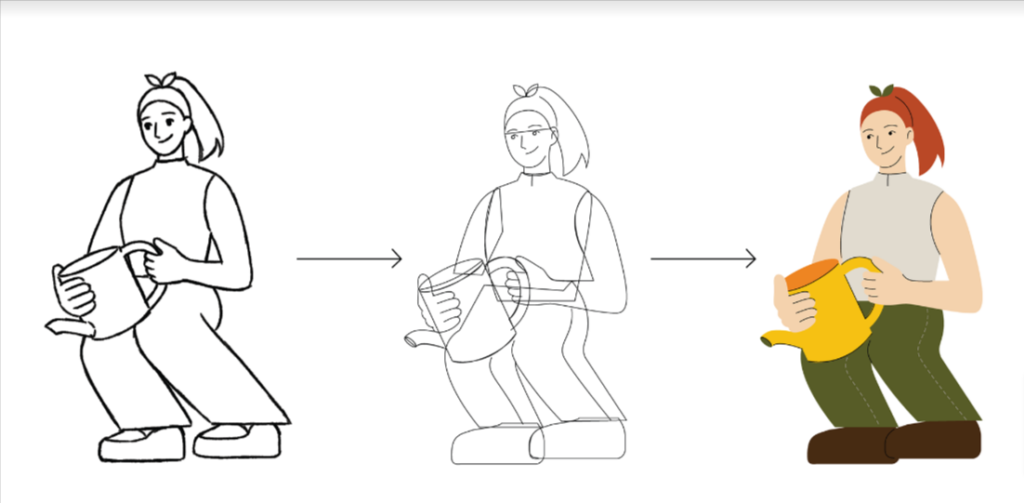
Showcasing Your Process: A Key to Success
Showcasing your process is crucial because it provides context and depth to your work. It demonstrates that you’re not just a pixel pusher but a strategic thinker who approaches design challenges methodically. By sharing your process, you invite viewers into your world, allowing them to understand the “why” behind your design decisions.
1. Define the Problem Statement
Start by presenting the initial brief or problem statement. This sets the stage and helps viewers understand the challenges you face. Then, walk them through your research phase. Did you conduct user interviews? Analyze competitors? Gather inspiration? Sharing this information demonstrates your thorough approach and attention to detail.
2. Showcase Your Ideation
Next, showcase your ideation phase. I recommend you include sketches, mind maps, mood boards, or rough sketches. Don’t be afraid to show “messy” work – it’s all part of the creative process. Explain how you narrowed down your ideas and why you chose certain directions over others.
3. Demonstrate Your Iterations
As you move into the design phase, show the evolution of your work. I would present different iterations and explain the reasoning behind each change. This demonstrates your ability to take feedback, iterate, and refine your designs.
4. Present the Deliverables
Finally, present the final product, but don’t stop there. Discuss the implementation process, any challenges you faced, and how you overcame them. If possible, include results or feedback from the client or end-users.
By showcasing your process, you’re not just presenting what you did but how you think. Based on my experience, I have found this to be incredibly valuable for potential clients or employers who want to understand how you approach problems and create solutions.

Tailoring Your Portfolio for Different Audiences
One size doesn’t fit all. Consider creating different versions of your portfolio, such as:
1. For potential clients: Focus on results and ROI.
2. For job applications: Highlight relevant skills and experiences.
3. For creative exploration: Showcase experimental work.
Adapt your portfolio to speak directly to each audience. This flexibility can make your graphic design portfolio or product design portfolio more effective in different contexts.
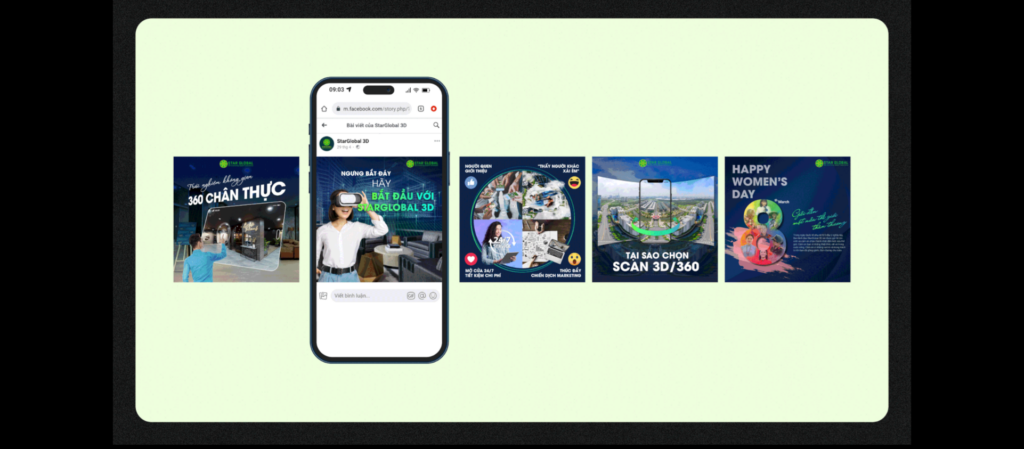
Optimizing Your Graphic Design Portfolio for Mobile
Since we live in a mobile-first world, I ensure that my portfolio looks great on all devices. To do that, consider the following:
1. Use responsive design: Ensure your site adapts to different screen sizes.
2. Optimize image sizes: Balance quality and load time.
3. Test on multiple devices: Ensure a consistent experience across platforms.
A smooth mobile experience is non-negotiable. Many people will check your portfolio on their phones, so it’s important that it looks good and is easy to go through. Make sure the text is readable, and images load quickly without losing quality.
By optimizing for mobile, you’ll leave a great impression on potential clients.
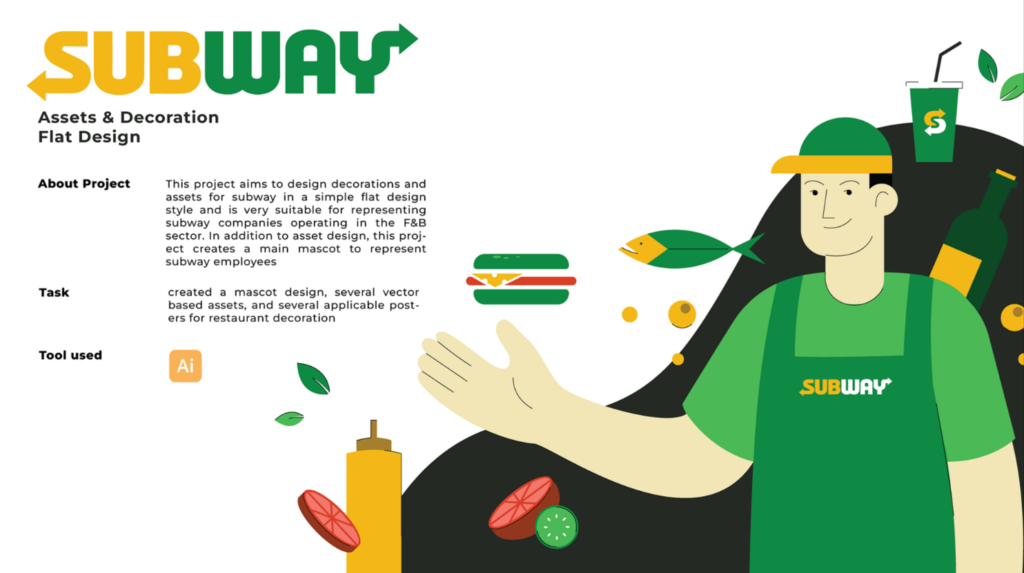
The Importance of Context in Your Portfolio
Context helps viewers understand the value you bring as a graphic designer. It transforms your portfolio from a simple gallery into a powerful demonstration of your problem-solving skills.
Context is what turns a collection of images into a compelling narrative about your skills and expertise. It’s the difference between a viewer thinking “That looks nice” and “Wow, this designer really knows how to solve problems.”
Here are some ways you can provide context in your portfolio.
Discuss Underlying Problems
When explaining the project brief, I would go beyond just stating what the client wanted and discuss the underlying problems or challenges. Understanding the “why” behind a project helps viewers appreciate the strategic thinking that went into your design solutions.
Describe Your Impact
Describing your role is crucial, especially for projects where you were part of a team. Be honest about your contributions. This transparency not only demonstrates your capabilities but also shows your ability to collaborate, an increasingly important skill in the design world.
Explain Your Approach
Discussing your design process in this context is also valuable. I always explain how I approached a challenge. This showcases your problem-solving methodology and demonstrates that your designs are grounded in strategy, not just aesthetics.
Share the Outcomes
Sharing outcomes is perhaps the most powerful way to provide context. Whenever possible, include quantitative results. These concrete results demonstrate the real-world impact of your design work.
By providing rich context for each project, you’re not just presenting your work – you’re demonstrating your value as a strategic partner in the design process. This can set you apart in a competitive field and help attract the kinds of projects and opportunities you’re most excited about.
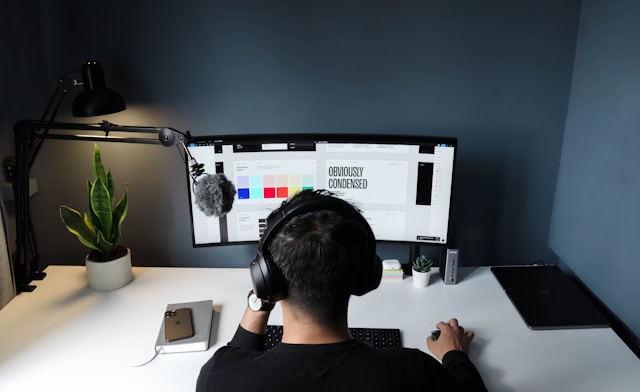
Putting It All together
Creating a stellar graphic design portfolio is an ongoing journey. It’s a reflection of your skills, creativity, and professional growth. Whether you’re crafting your first portfolio or revamping an existing one, remember it’s your chance to shine.
I’ve shared examples of graphic design portfolios, tips for success, and insights on presentation. Now, it’s your turn to apply these ideas. Your unique voice and vision will set your portfolio apart.
Always start by reviewing your current work. Choose your best pieces, tell their stories, and present them in a way that captures your creative spirit. Remember, an effective design portfolio is more than just a collection of work – it’s a strategic tool for advancing your career and attracting the right opportunities.
How Can Page Flows Help You Create a Top Graphic Design Portfolio
As you embark on creating or refining your graphic design portfolio, remember that inspiration and guidance can be invaluable. That’s where Page Flows comes in.
At Page Flows, we provide:
1. In-depth UX teardowns of popular apps and websites
2. A vast collection of user flow videos
3. Curated examples of excellent design across various categories
Whether you’re looking for graphic design portfolio examples, seeking inspiration for your next project, or wanting to stay updated on the latest UX trends, Page Flows has you covered. Check out Page Flows and join a community of designers dedicated to creating exceptional user experiences.


